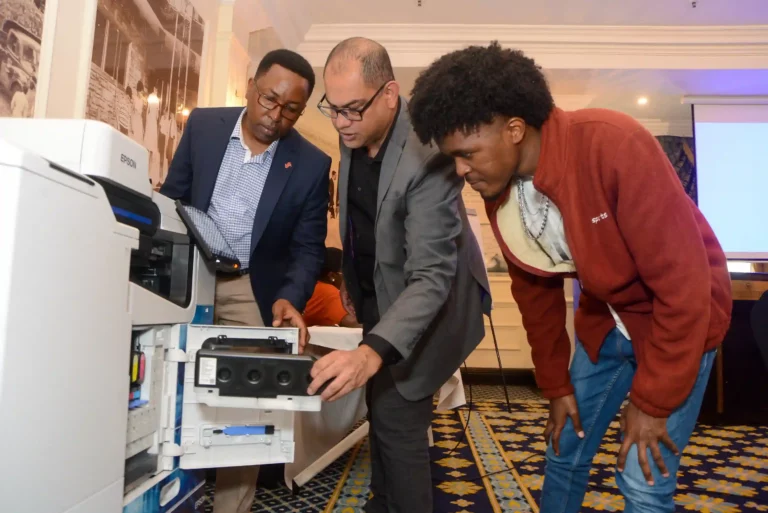Epson, a global technology company, has released a study that shows how technology can help fight climate change.
Epson’s Regional Head for East and West Africa, Mukesh Bector, says Epson’s products are designed to use fewer resources, last longer, and be more eco-friendly.
Bector spoke at an education technology and sustainability stakeholder event in Nairobi, where he highlighted the role of sustainable technology in education and the COP28 agenda.
The event showcased Epson’s commitment to environmental stewardship and educational innovation in East and West Africa.
“Technology is the most important weapon in the fight against catastrophic climate change. Together, we can create the solutions that people need as they act to mitigate climate impact,” Bector said.
Epson’s research in Kenya revealed that 90% of students agree that printed materials help them learn better than digital materials alone, but 77% of them feel conflicted about printing because they want to be environmentally conscious.
Moreover, 87% of Kenyan students believe their learning would improve if their place of education provided them with a more sustainable printing solution that uses less energy and creates less waste.
Epson Heat-Free printers can provide this balance between quality education and environmental responsibility. These printers reduce energy consumption and paper waste compared with laser printers.
They also offer double-sided printing and interactive features that bring lessons to life.
Epson EcoTank printers are another example of the company’s ethos of reducing ecological footprints. These printers are highly efficient, low-waste, and can lower schools’ operational costs and carbon emissions. These printers align with the goals of COP28 to mitigate the effects of climate change.
The event also featured a panel discussion with educators, technologists, and journalists, who discussed how Epson’s technology fosters a more sustainable and accessible educational environment.
The panellists emphasized the importance of using advanced yet sustainable technological tools to empower youth and prepare them for a greener future.
They also talked about the emergence of ‘green skills’ that are essential for both employment and environmental responsibility, in line with the United Nations Sustainable Development Goal 4 on quality education.
“In the ever-evolving landscape of education, we find ourselves at a crossroads between the traditional allure of print and the dynamic capabilities of digital technology,” said Ian Muthomi, the Chief Executive Officer of Vision Drill Kenya, during the panel discussion.
“As we navigate this junction, it’s imperative to strike a harmonious balance that leverages the tactile engagement of print with the interactive and boundless potential of digital platforms. This equilibrium is not just a convenience but a necessity for cultivating adaptable learners who can thrive in both the pages of a book and the pixels of a screen.”
The panel also addressed the challenges and opportunities of implementing sustainable technology in education, such as the need for policy support, infrastructure development, teacher training, and stakeholder collaboration.
The panellists agreed that sustainable technology can enhance learning outcomes, student engagement, and teacher satisfaction while also reducing environmental impact and operational costs. They urged educational institutions to adopt sustainable technology as a way of preparing the next generation of leaders and innovators.




